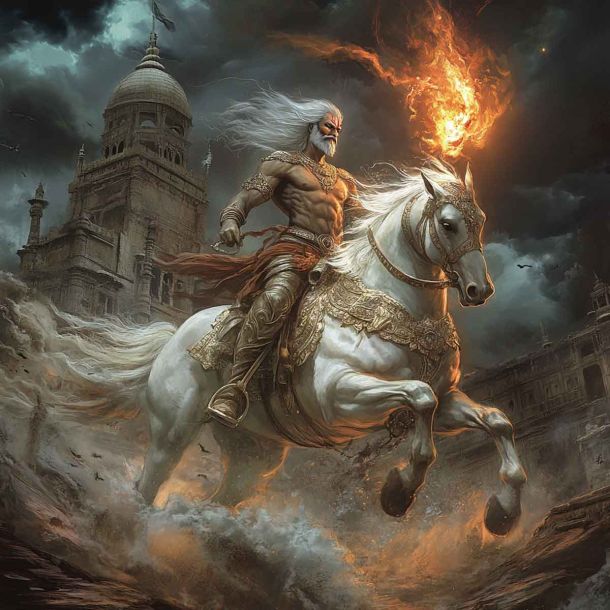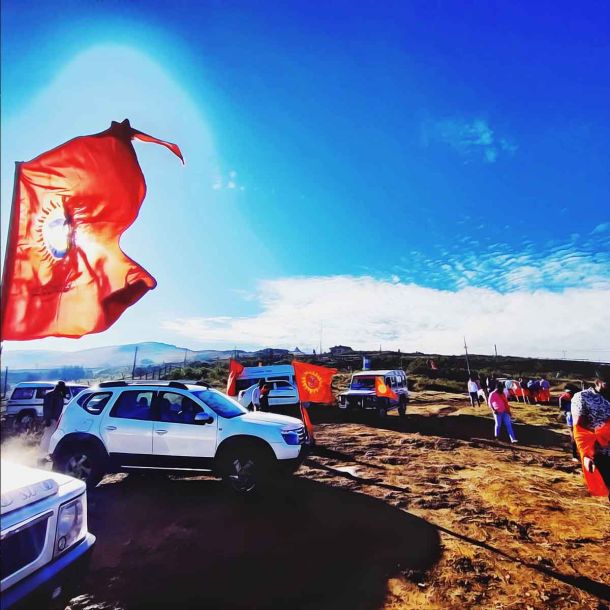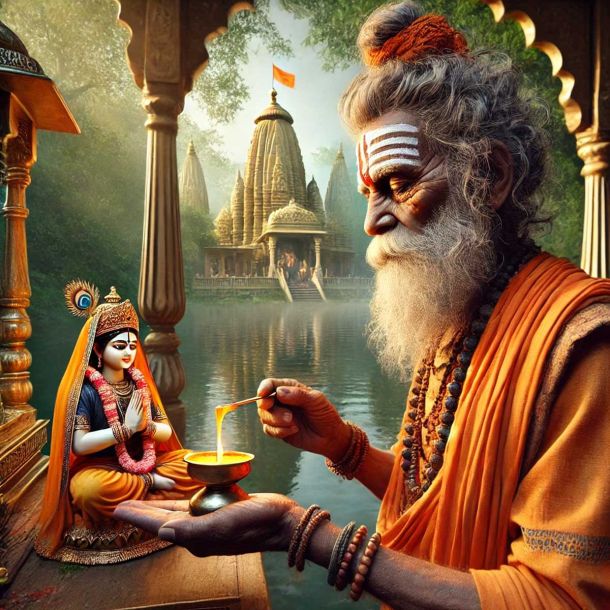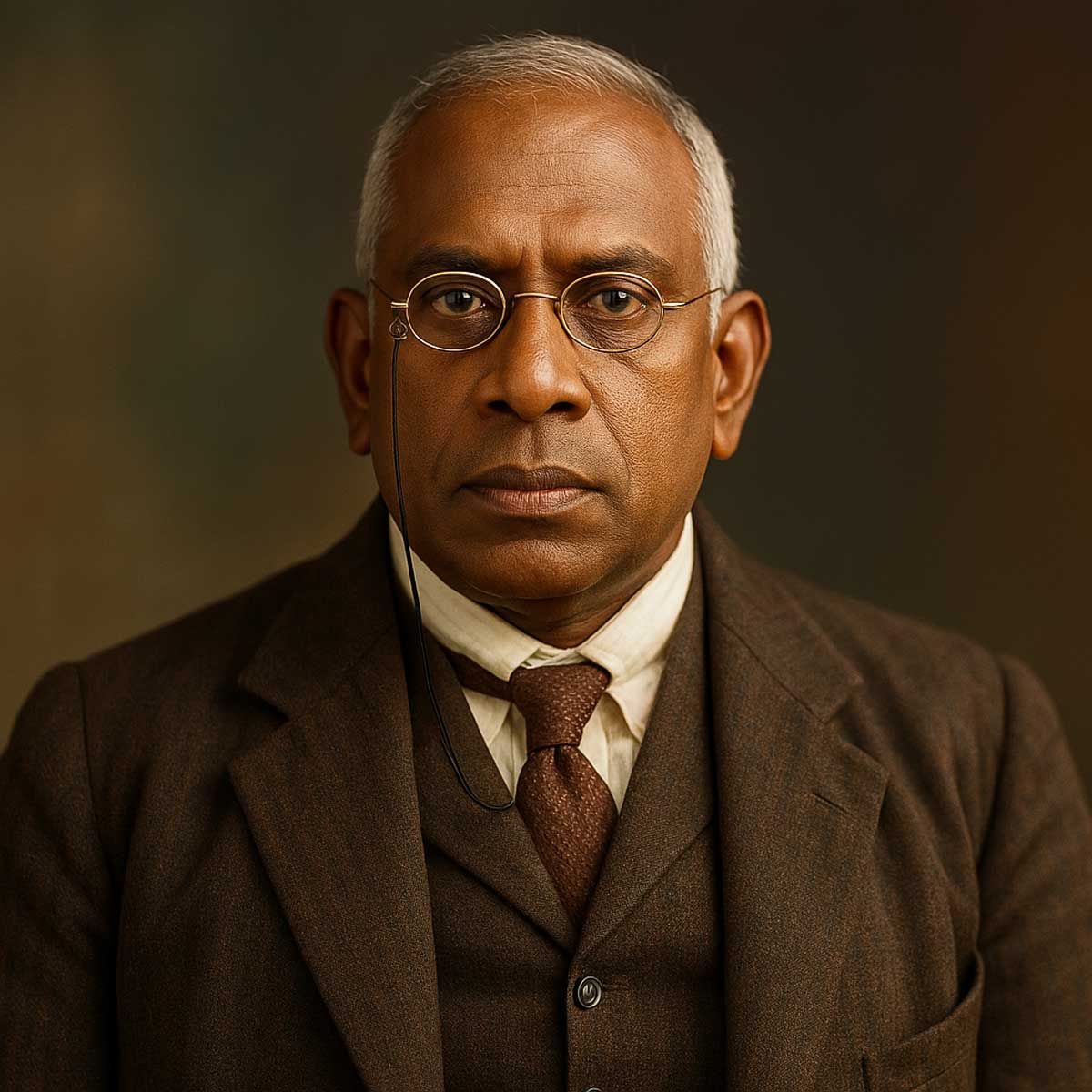More Coverage
Twitter Coverage
Satyaagrah
Written on
Satyaagrah
Written on
Satyaagrah
Written on
Satyaagrah
Written on
Satyaagrah
Written on
Join Satyaagrah Social Media
"A miracle is the direct intercession of a higher plane of reality into this world": Pathirakali Amman Temple in Trincomalee is a Hindu temple dedicated to the goddess Bhadrakali, a form of the goddess Kali Amma in Trincomalee, Eastern Province, Sri Lanka
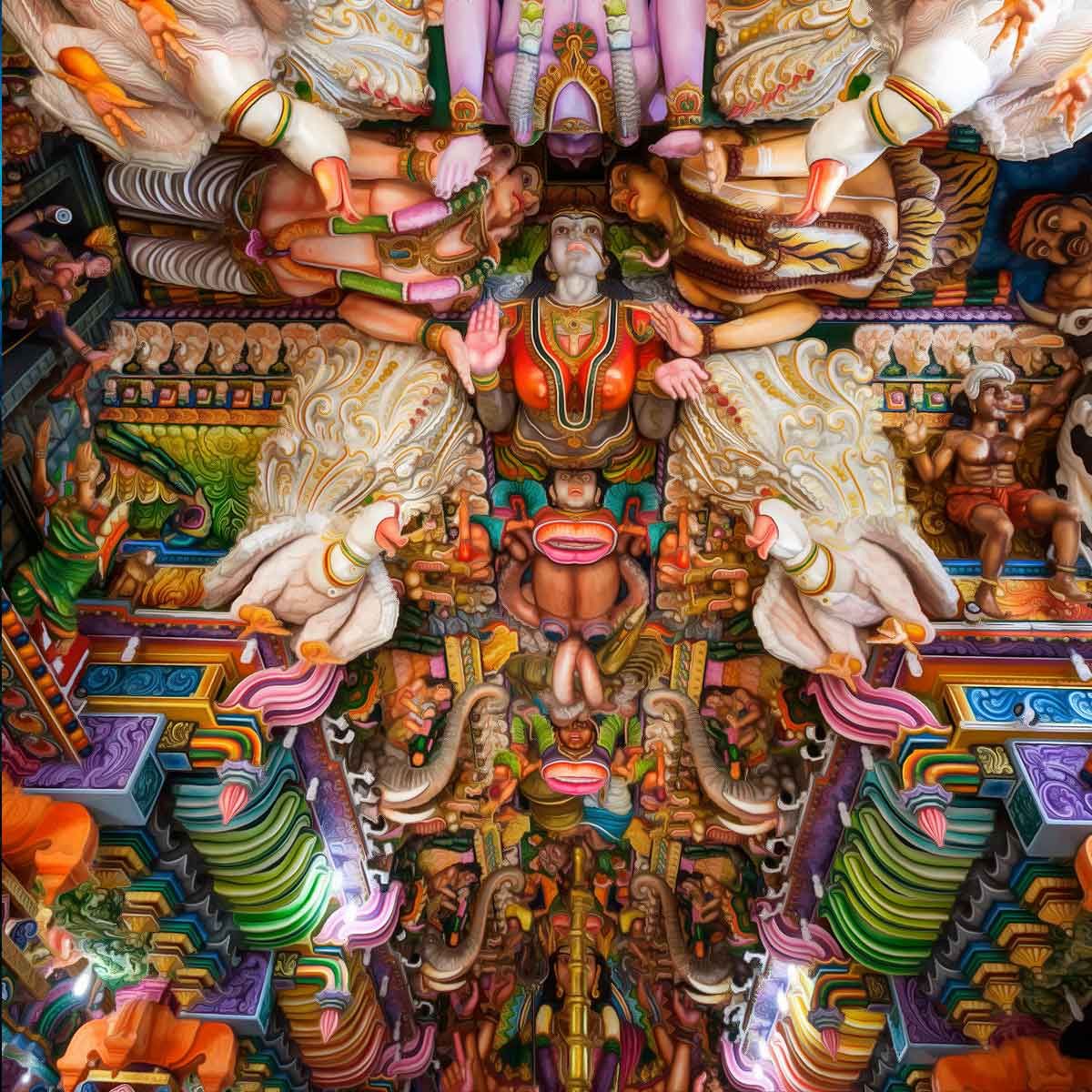
Pathirakali Amman Temple (Tamil: பத்திரகாளி அம்பாள் கோயில்) – Pathirakali Ambal Kovil – or the Kali Kovil, Trincomalee is a Hindu temple dedicated to the goddess Bhadrakali, a form of the goddess Kali Amman in Trincomalee, Eastern Province, Sri Lanka.
|
The Kali temple of the ancient Trincomalee Koneswaram Temple Compounds is a large complex of connected shrines in the Trincomalee Konesar Malai area, the temple is located close to the Trincomalee Hindu College. Made in classical Dravidian architecture, the Kovil is located just beyond the Konesar Road Esplanade before the entrance to Konamamalai (Swami Rock). Proximal to the ancient Koneswaram temple, both ancient temples share functions during the Ther Thiruvillah Festival procession and the Back Bay Sea (Theertham Karatkarai). Pathirakali Amman temple has attracted pilgrims from before the 11th century CE. King Rajendra Chola I expanded the shrine significantly during his reign, an inscription he left detailing this is displayed on the premises.
The Sri Pathrakali Amman Temple is a Hindu temple that’s dedicated to the Goddess Kali, specifically the form of Bhadrakali. It is found within the famous Trincomalee Koneswaram Temple Complex which contains a large number of connected Hindu shrines and temples.
While the exact origins of the Sri Pathrakali Amman Temple are shrouded in mystery, it is known that the shrine was constructed by the 11th century and was attracting large numbers of visitors even then. Once the Cholas invaded Sri Lanka and consolidated their power near the end of the 1st century, they began to undertake several reconstruction and renovation projects. The Sri Pathrakali Amman Temple was included in this and received major additions under the patronage of King Rajendra Chola I. There’s even an inscription you can still read today that provides evidence of this act.
During your visit to the temple, the most striking feature you’ll notice is the architecture on display. These display a Dravidian style alongside the obvious Chola influences. The exterior of the temple is brilliantly colorful and showcases a number of unique stories and legends via paintings and sculptures.
The Pathirakali Ambal Kovil, also known as the Paththirakali Amman Temple, is a prominent Hindu temple located in Jaffna, Sri Lanka. Dedicated to the goddess Pathirakali Amman, it holds significant religious and cultural importance for the Tamil community in the region. The temple's rich history and architectural beauty make it a popular pilgrimage site and a symbol of devotion.
The origins of the Pathirakali Ambal Kovil can be traced back several centuries. It is believed that the temple was initially constructed in the 17th century during the reign of the Jaffna Kingdom. Over the years, the temple underwent various renovations and expansions, with each successive ruler and devotee contributing to its development.
The temple's primary deity, Pathirakali Amman, is a form of the Hindu goddess Kali. She is revered as the fierce and powerful goddess of protection, war, and fertility. Devotees believe that her worship brings prosperity, blessings, and divine intervention in their lives. The idol of Pathirakali Amman is enshrined within the temple's inner sanctum, adorned with vibrant sarees, jewelry, and flowers.
|
Architectural style
Paththirakali Amman Temple, is a captivating blend of Dravidian and South Indian temple styles. Located in Jaffna, Sri Lanka, this Hindu temple showcases intricate craftsmanship and exquisite detailing that reflect the cultural and artistic heritage of the region.
The temple's most striking feature is its gopurams, which are ornate tower gateways that mark the entrances to the temple complex. These towering structures serve as iconic symbols of South Indian temple architecture. The gopurams of the Pathirakali Ambal Kovil are adorned with meticulously carved sculptures of gods, goddesses, mythical creatures, and celestial beings. The intricate stonework and vibrant colors add to the grandeur and visual appeal of the temple.
As visitors enter the temple through the gopurams, they are welcomed into a large courtyard or prakaram. This open space is surrounded by pillared halls, known as mandapams, which provide shelter and gathering areas for devotees. The mandapams feature beautifully carved stone pillars with intricate designs, showcasing the skilled craftsmanship of the artisans.
At the heart of the temple complex lies the sanctum sanctorum, where the main deity, Pathirakali Amman, is enshrined. The inner sanctum is usually accessed through a series of doorways, gradually leading devotees closer to the divine presence. The sanctum is adorned with elaborate decorations, including sarees, jewelry, and floral garlands, creating a visually captivating space for worship.
The architecture of the Pathirakali Ambal Kovil also incorporates smaller shrines dedicated to other deities within the temple premises. These shrines are often dedicated to gods and goddesses such as Lord Murugan, Lord Ganesh, and Lord Shiva. Each shrine showcases unique architectural elements, including intricately carved stone sculptures and detailed murals depicting mythological stories and religious themes.
The temple's exterior walls are adorned with various decorative motifs and reliefs, depicting scenes from Hindu mythology and important religious narratives. These carvings not only serve as decorative elements but also convey spiritual and symbolic meanings.
The Pathirakali Ambal Kovil's architectural design and layout are carefully planned to create a sense of sacredness and spiritual ambiance. The combination of intricate carvings, vibrant colors, and meticulous craftsmanship all contribute to the visual splendor of the temple.
Over the years, the temple has undergone several renovations and restorations to preserve its architectural integrity and cultural significance. These efforts have ensured that the Pathirakali Ambal Kovil remains a treasure trove of architectural beauty and an important cultural landmark in Sri Lanka.
Visiting the Pathirakali Ambal Kovil allows one to witness the remarkable fusion of artistic traditions, religious devotion, and cultural heritage. The temple's architectural splendor serves as a testament to the rich cultural tapestry and deep-rooted spiritual beliefs of the Tamil community in Sri Lanka.
|
Festival
The Pathirakali Ambal Kovil is renowned for its vibrant and festive celebrations. The temple hosts several festivals throughout the year, which are eagerly awaited and enthusiastically celebrated by devotees and visitors. These festivals offer a unique opportunity to witness the rich cultural traditions, religious rituals, music, dance, and joyous processions associated with the temple.
One of the most significant festivals celebrated at the Pathirakali Ambal Kovil is the Pathirakali Amman Kovil Thiruvizha. This grand festival takes place annually during the Tamil month of Aadi (July-August) and spans several days. It is a time of great excitement and devotion for the devotees.
The festivities commence with the Kodiyetram, the hoisting of the temple flag. A ceremonial flag is raised on a tall flagpole, symbolizing the start of the festival. This act signifies the temple's readiness to welcome the deity and the commencement of the celebrations.
During the Thiruvizha, the temple premises come alive with colorful decorations, illuminations, and elaborate arrangements. The temple is adorned with beautiful flowers, traditional ornaments, and festive attire, creating a vibrant and joyous atmosphere.
One of the highlights of the festival is the chariot procession, known as the Ther Thiruvizha. The deity, Pathirakali Amman, is placed on a magnificently decorated chariot and taken on a procession around the temple. Devotees pull the chariot through the streets, accompanied by devotional music, chanting, and dancing. It is a spectacle of faith, devotion, and celebration, as devotees seek blessings and express their gratitude to the goddess.
Another important ritual during the festival is the Annathanam or the offering of food. Devotees prepare and serve meals to fellow devotees and visitors as a form of charity and community service. It is a gesture of sharing and abundance, reflecting the spirit of compassion and unity.
Music and dance play an integral role in the festival celebrations. Traditional Tamil music, known as Devotional music, fills the air, creating an enchanting ambiance. Devotees sing hymns and bhajans, expressing their devotion to the deity. Classical dance performances, such as Bharatanatyam and Kathakali, are also showcased during the festival, adding grace and cultural richness to the festivities.
The Pathirakali Amman Kovil Thiruvizha is not only a religious event but also a cultural extravaganza. It provides a platform for artists and performers to showcase their talents, keeping traditional art forms alive and thriving. The festival attracts a diverse audience, including devotees, tourists, and locals, who come together to celebrate and experience the vibrant traditions of Sri Lankan Tamil culture.
Apart from the Thiruvizha, the Pathirakali Ambal Kovil also celebrates other important Hindu festivals such as Navaratri, Diwali, and Pongal. These festivals are marked by special rituals, puja ceremonies, cultural performances, and a gathering of devotees seeking divine blessings.
Attending the festivals at the Pathirakali Ambal Kovil is an immersive and enriching experience. It allows individuals to witness the deep-rooted traditions, spiritual fervor, and strong sense of community that characterizes these celebrations. The festivals serve as a reminder of the enduring cultural heritage and the significance of religious devotion in Sri Lanka.
|
Income
The income of the Pathirakali Ambal Kovil in Sri Lanka primarily comes from various sources including donations, offerings, and contributions made by devotees, as well as income generated through temple properties and activities.
Devotees visiting the temple often make monetary contributions as a symbol of their devotion and to support the upkeep and maintenance of the temple. These donations can vary in amount and are typically made in cash or kind, such as offerings of flowers, fruits, or other items considered auspicious.
The temple also receives income from the sale of religious items, such as sacred threads, incense sticks, and holy water, which are purchased by devotees as part of their worship rituals. The revenue generated from these sales contributes to the overall income of the temple.
Furthermore, the Pathirakali Ambal Kovil may have properties or assets, such as land or buildings, which generate rental income or other forms of revenue. Income generated from these properties is often utilized for the maintenance, renovation, and development of the temple infrastructure.
The temple may also organize fundraising events, cultural programs, and festivals that attract devotees and visitors. These events may involve ticket sales or sponsorship opportunities, generating additional income for the temple. The funds raised through these activities are typically allocated towards the management and improvement of the temple facilities and services.
Additionally, the Pathirakali Ambal Kovil may receive financial support or grants from government bodies, religious organizations, or philanthropic individuals who recognize the temple's cultural and religious significance. These contributions further assist in the maintenance and development of the temple.
It's important to note that the specific details regarding the income of the Pathirakali Ambal Kovil can vary, and the temple administration may have its own unique practices and financial management strategies in place.
The income generated by the Pathirakali Ambal Kovil plays a vital role in sustaining the temple's operations, facilitating religious ceremonies, supporting community initiatives, and preserving the rich cultural heritage associated with the temple. It ensures the continuity of worship services, the upkeep of the temple premises, and the provision of various amenities and services to devotees and visitors alike.
|
The responsible management of the temple's income is crucial in ensuring that the funds are utilized effectively and transparently for the benefit of the temple and its devotees. Temple authorities and management committees work diligently to maintain financial accountability and ensure that the income is allocated toward the welfare of the temple and its community.
It's worth mentioning that the specific financial details and intricacies of the Pathirakali Ambal Kovil's income are best obtained from the temple administration or relevant authorities, as they would have access to the most up-to-date and accurate information regarding the temple's financial matters.
The Pathirakali Ambal Kovil serves not only as a religious institution but also as a center for cultural and community activities. It plays an integral role in preserving and promoting Tamil heritage, hosting cultural events, music concerts, and educational programs. The temple also provides charitable services, such as offering food, shelter, and financial assistance to the needy.
The Pathirakali Ambal Kovil stands as a testament to the deep-rooted spiritual beliefs and cultural traditions of the Tamil community in Sri Lanka. Its historical significance, architectural grandeur, and religious fervor continue to attract devotees, scholars, and tourists, offering a glimpse into the rich tapestry of Sri Lankan Hinduism and Tamil culture.
 Support Us
Support Us
Satyagraha was born from the heart of our land, with an undying aim to unveil the true essence of Bharat. It seeks to illuminate the hidden tales of our valiant freedom fighters and the rich chronicles that haven't yet sung their complete melody in the mainstream.
While platforms like NDTV and 'The Wire' effortlessly garner funds under the banner of safeguarding democracy, we at Satyagraha walk a different path. Our strength and resonance come from you. In this journey to weave a stronger Bharat, every little contribution amplifies our voice. Let's come together, contribute as you can, and champion the true spirit of our nation.
 |  |  |
| ICICI Bank of Satyaagrah | Razorpay Bank of Satyaagrah | PayPal Bank of Satyaagrah - For International Payments |
If all above doesn't work, then try the LINK below:
Please share the article on other platforms
DISCLAIMER: The author is solely responsible for the views expressed in this article. The author carries the responsibility for citing and/or licensing of images utilized within the text. The website also frequently uses non-commercial images for representational purposes only in line with the article. We are not responsible for the authenticity of such images. If some images have a copyright issue, we request the person/entity to contact us at satyaagrahindia@gmail.com and we will take the necessary actions to resolve the issue.
Related Articles
- "The greatness of a culture can be found in its festivals": India is a land of festivals, sometimes rather very unique like Chamayavilakku festival which is celebrated in Kerala and is unique because here men dress up as women to worship Devi Bhagavathy
- Criticizing Varanasi court Asaduddin Owaisi spreads hate again, says court paving way for ‘anti-Muslim violence’ with the survey of disputed structure ‘Gyanvapi Mosque’ premises
- Proud Kalyan Singh refused to give orders to shoot Karsevaks and chose to resign as CM of UP instead: Karsevaks not only reached atop the dome but had also started breaking it, where Ram Mandir stands today
- 1200 years old rarest idol of Lord Narasimha and devotee Prahlada identified in Qutub Minar complex by renowned archaeologist Dharamveer Sharma: special attraction for religious and researching community
- Few thieves ruthlessly poisoned seven dogs to ensure unopposed and uninterrupted theft in a Kali Mata temple, steal Rs 15,000 cash from donation box: Bihar
- Odisha Chief Minister Naveen Patnaik inaugurated renovated divine shrine Maa Tara Tarini Temple complex, one of the most revered temples on Kumari hills at the banks of Rushikulya river: modern day masterpiece
- “When I make your peace, You Shall See My real color, My Viswaroopam, Prabhu Murugan”: This colossal gold painted statue of Sri Murugan, made from reinforced concrete and standing 140 feet tall isn’t in India, it’s in fact in Batu Caves in Malaysia
- When Secular Nehru Opposed Restoration Of Somnath Temple - The Somnath Temple treachery
- "चलाक मंदबुद्धि": Muslim man Sher Khan pelts stones at Ram Temple, threatens Mahant, claiming the temple belongs to Muslims; Mahant Arun Chaudhary asserts Sher Khan is faking mental instability, only targeting Hindus and making a fool out of everyone
- Hindu side filed reply in Supreme Court: 'Gyanvapi property belonged to Lord Adi Vishweshwar since time immemorial, even before the Islamic rule in India, and hence cannot be handed to anybody'
- Madhya Pradesh HC accepted petition for stay on Muslims performing Namaz in the compound of Bhojshala monument: Read how an educational centre and a historic temple of Goddess Saraswati became Kamal Maulana mosque
- "Temple will be an ever-present reminder that God intended the family to be eternal": Thirunakkara Mahadevar Temple situated in the heart of Kottayam is one of the 108 revered Shivalayas in Kerala, preserves sculptures and murals of Hindu deities
- Menace of historical oblivion: Hindus have forgotten about a thousand years of Islamic persecution
- ‘Lord Shiva helps creation sprout even from ruins, Humanity always wins over terrorism’: PM Modi launches key projects at Somnath
- “Sacred space is where you can find yourself over and over again”: Goa govt inked a MOU with Temple Connect to position Goa, popularly known as 'Bhagwan Parshuram Bhoomi', to be a global destination for spiritual tourism as 'Dakshin Kashi' of India

